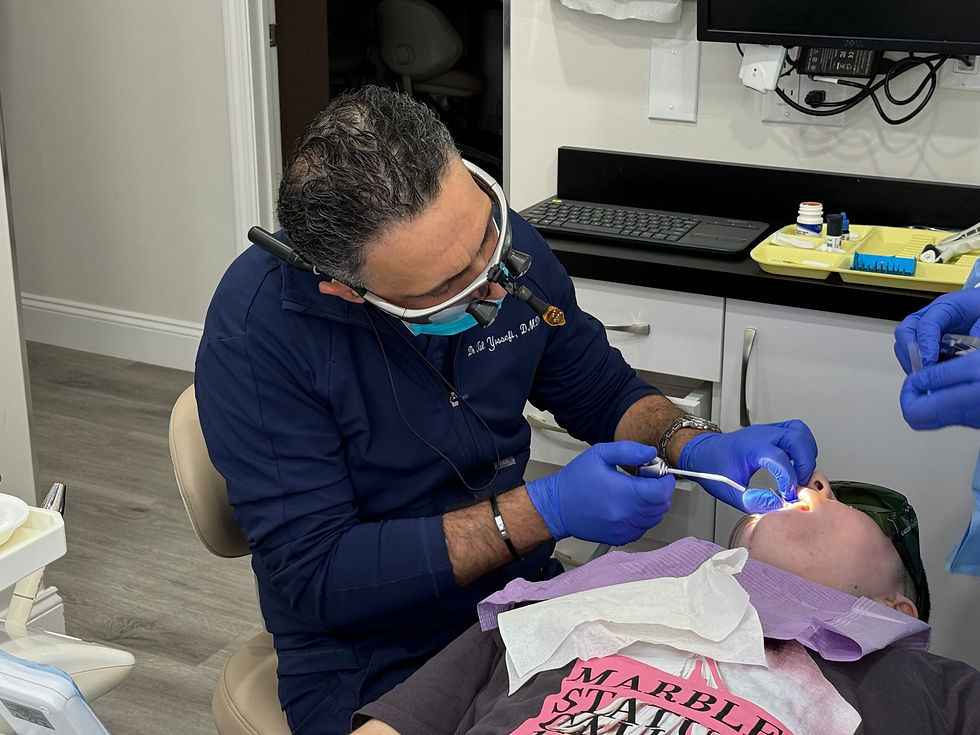Silver Amalgam vs Composite Resin Filling Materials
- ADC Dentist

- Nov 25, 2019
- 2 min read
To treat a cavity your dentist will remove the decayed portion of the tooth and then "fill" the area on the tooth. Fillings are also used to repair cracked or broken teeth.
Fillings are normally done with silver amalgam or composite resin.
The location and extent of the decay, cost of filling material, your insurance coverage, and the professional dentist's recommendation assist in determining the type of filling best for you. Before that you may check a quick outline of the advantages and disadvantages of these filling options.
Silver Amalgam
Silver amalgam is a very soft, malleable, metal compound that is made up of copper, tin, silver, and mercury.
Advantages of silver fillings:
Durability - last at least 10 to 15 years and usually outlasts composite fillings.
Strength - they can withstand the forces of chewing. Also they are less sensitive to moisture during the filling process than composite resin.
Expense - may be less expensive than composite fillings
Disadvantages of silver fillings:
Poor aesthetics - silver fillings don't match the color of your teeth.
Destruction of more tooth structure - healthy parts of the tooth must often be removed to make a space large enough to hold the amalgam filling.
Discoloration - amalgam fillings can corrode or tarnish over time.
Cracks and fractures - amalgam material may experience a wider degree of expansion and contraction and lead to a higher incidence of cracks and fractures.
Allergic reactions - some people may be allergic to mercury.
Composite Resin
Composite resin is made of finely ground glass and porcelain particles which mixed together to create an opaque material.
Advantages of composites:
Aesthetics - the shade/color can be closely matched to the color of existing teeth.
Bonding to tooth structure - can bond directly to the tooth. This makes the tooth stronger than it would be with an amalgam filling.
Versatility - in addition to use as a filling material for decay, it can also be used to repair chipped, broken, or worn teeth. Can be used in combination with other materials.
Tooth-sparing preparation - less drilling is involved than with amalgam fillings.
Disadvantages of composites:
Lack of durability - composite fillings wear out sooner than amalgam fillings (lasting at least five years compared with at least 10 to 15 for amalgams).
Increased chair time - take more time to place. Additional visits - if composites’re used for inlays or onlays, more than one office visit may be required.
Expense - composite fillings can cost up to twice the cost of amalgam fillings.
So if cost’s a factor, the silver amalgam fillings are more affordable and still offer the same, long-lasting, and durable wear. If visual appearance’s important, the professional team of dentists can accommodate your choice by using composite resin and precise color matching.

we always take the time to discuss the various options with our patients before a procedure. If you have any questions you can get FREE consultation with one of our dentists.




Comments